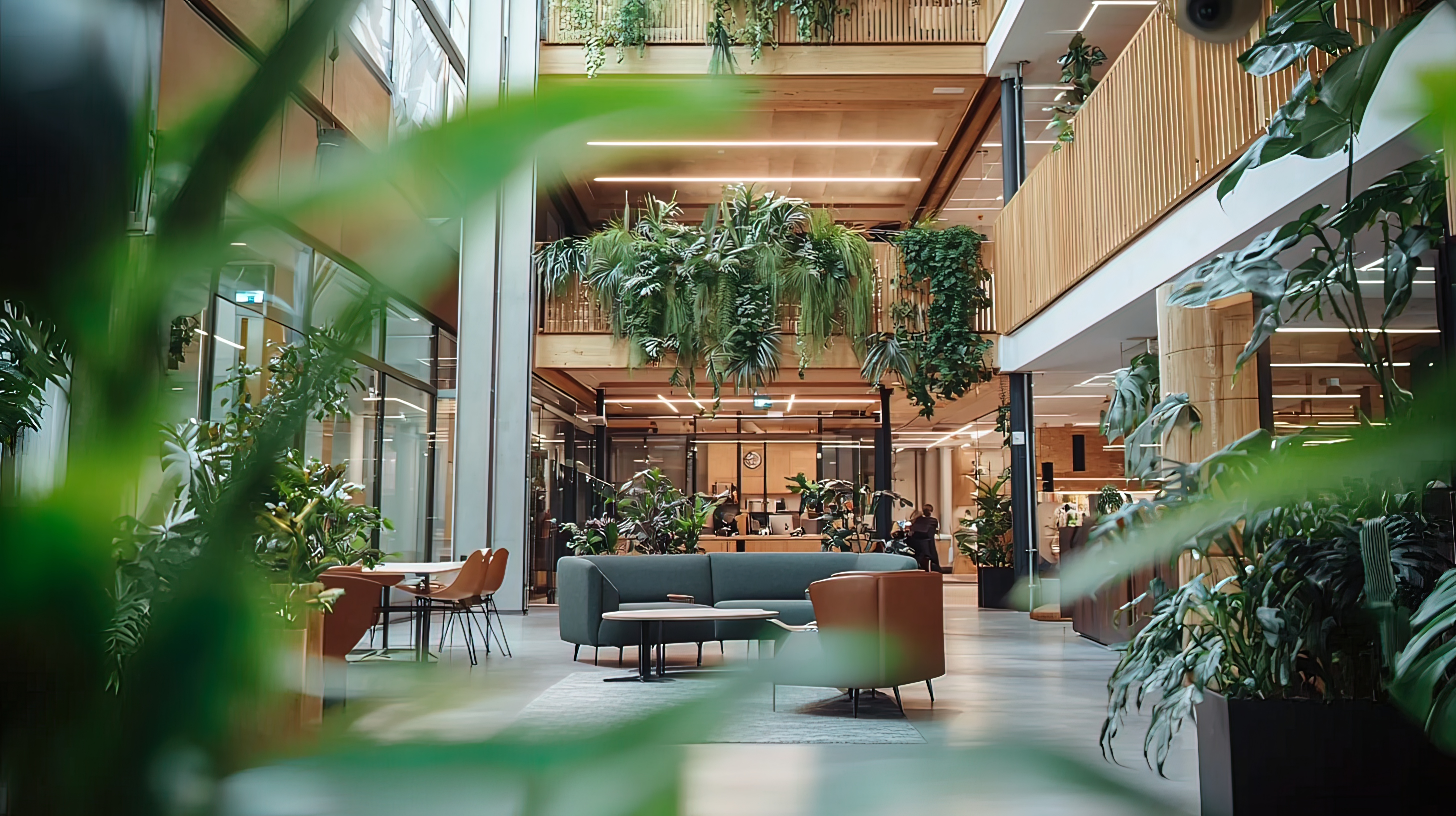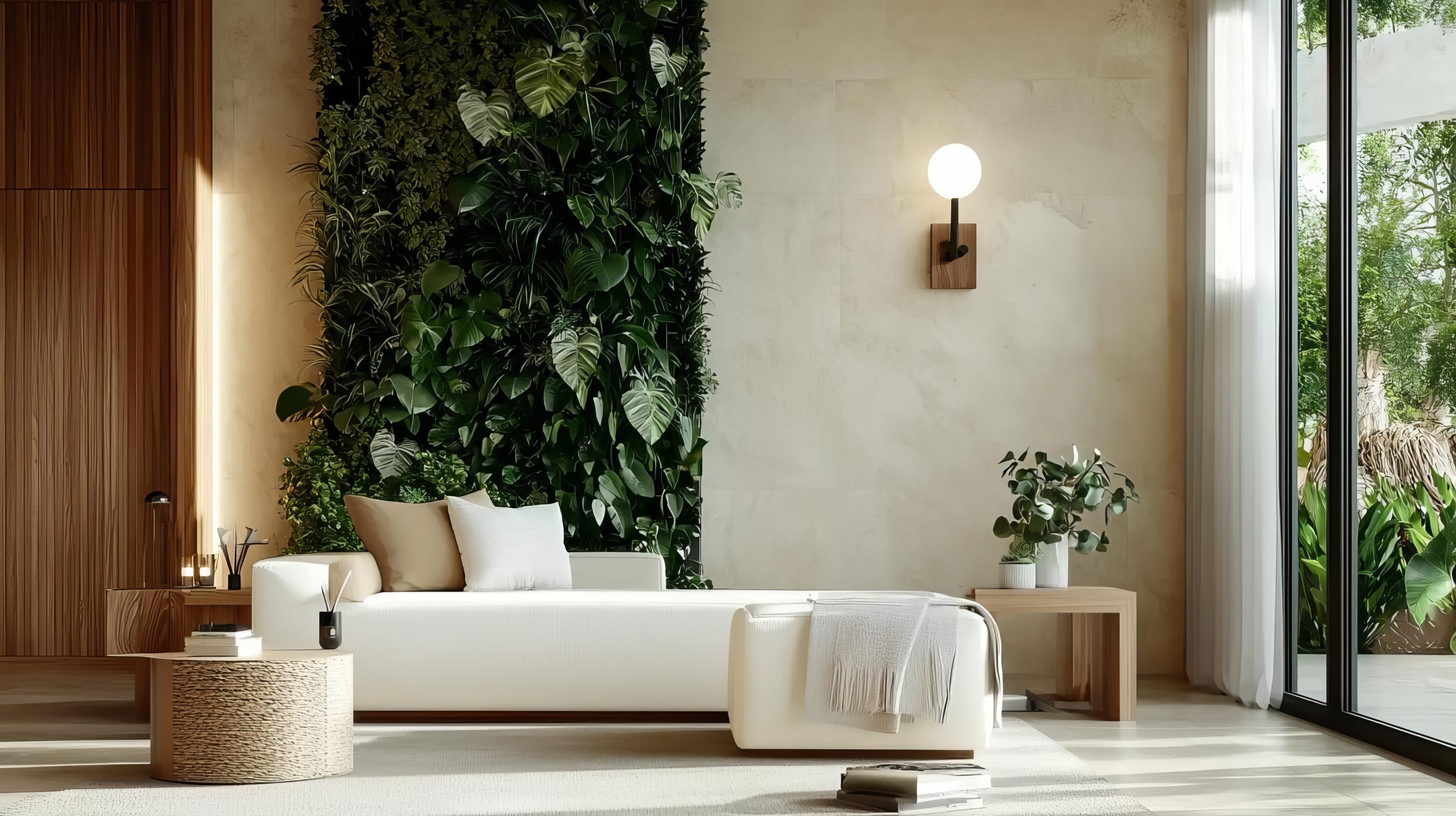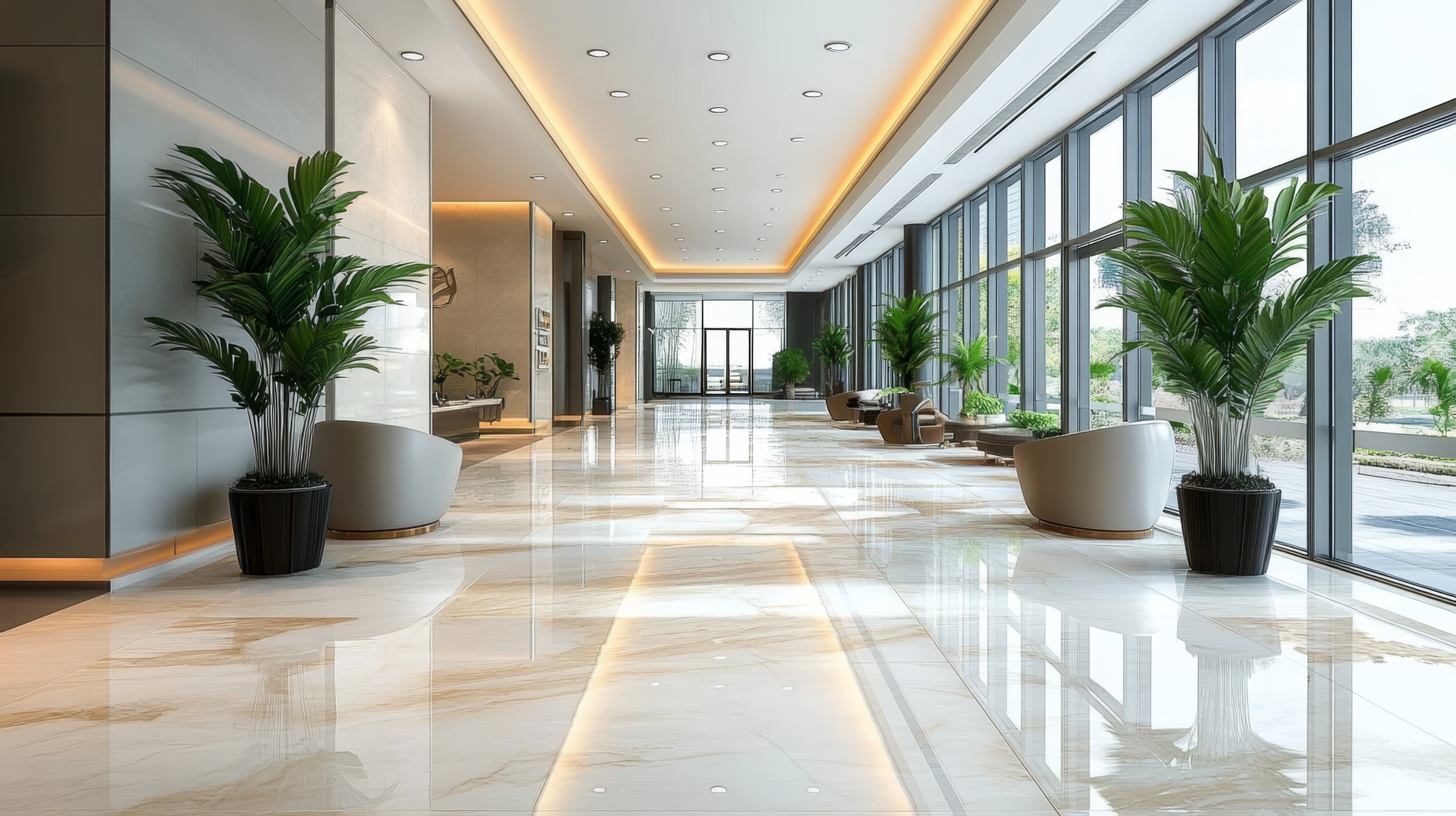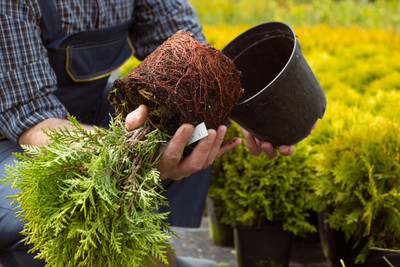Boosting LEED & WELL Scores with Living Planters
Posted by Jason Wyrwicz on Jun 6th 2025

For interior designers, architects, and property managers aiming to create beautiful, sustainable spaces, LEED and WELL certifications are no longer optional - they’re the benchmark.
But while most professionals focus on lighting systems or energy-efficient HVAC, they often overlook a surprising game-changer: the living planter.
Adding living greenery to a space is more than just about aesthetics or employee morale. Done right, it can unlock multiple credits across LEED v5 and WELL v2 certification systems, and let you hit those sustainability goals with style.
Let’s dig into how living planters can help you rack up points while enhancing workplace wellness, tenant satisfaction, and long-term building performance.
You’ll see exactly which credits a few living planters can unlock - and why.
How LEED & WELL Building Standard Scoring Works
Before we jump into the benefits of living planters, let’s break down what LEED and WELL are really scoring you on.
LEED (Leadership in Energy and Environmental Design) is the most widely used green building rating system, developed by the U.S. Green Building Council (USGBC).
It helps buildings lower their environmental impact by giving points in areas like energy efficiency, water use, indoor air quality, and sustainable materials. Earning LEED certification means your building is designed and built with sustainability in mind - and you can prove it with real data.
WELL, managed by the International WELL Building Institute (IWBI), is another major certification, but its focus is on people. It measures how well a space supports the health and well-being of those who use it.
WELL looks at factors like air, light, sound, temperature, and even mental health. It’s about making indoor environments healthier and more supportive through design, operations, and policies.
Together, LEED and WELL cover both the planet and the people in your building, making them a powerful duo for modern design.
LEED and WELL Sustainability Certifications
- LEED v5 - The latest version launched in April 2025 and brings a stronger focus on cutting carbon emissions, supporting human health, and preparing buildings for climate change. It raises the bar for energy use, material selection, and occupant wellbeing.
- WELL v2 - This version is designed to be flexible and is updated regularly. It rewards buildings that show improvements in how they support people’s physical and mental health, using real-world data. WELL v2 looks closely at how design choices, building operations, and policies work together to improve day-to-day life.
| Program | Focus Area | Points Possible |
|---|---|---|
| LEED v5 | Environmental Impact | Up to 110 |
| WELL v2 | Human Wellbeing | Up to 100 |
Why Living Planters Deliver Points

Living planters offer more value than meets the eye - they play a key role in earning both LEED and WELL credits by contributing to multiple performance categories across sustainability and human wellness.
Here’s what planters bring to the table for LEED and WELL-certified buildings:
- Biophilia - Reinforces the visual and sensory connection to nature - a central tenet of WELL’s Mind concept and LEED’s indoor environmental strategies.
- Cleaner air - Many indoor plants can absorb airborne pollutants and regulate humidity, supporting WELL’s Air feature and helping to improve overall air quality.
- Thermal comfort - Greenery contributes to a more stable indoor climate by regulating humidity and perceived comfort - relevant for both WELL Thermal Comfort and LEED Indoor Environmental Quality categories.
- Acoustic softening - Plant foliage helps absorb sound, reducing noise levels in open-plan offices or shared spaces - a bonus for WELL’s Sound concept.
- Urban heat reduction - Outdoor rooftop planters reduce solar heat absorption and help mitigate the heat island effect, which earns credits under LEED’s Sustainable Sites category.
Beyond the certifications, living planters offer real-world value:
- Better focus - Studies show that exposure to natural elements reduces cognitive fatigue and improves focus, which ties back into WELL’s emphasis on mental wellness.
- Tenant retention - Healthy, visually appealing spaces encourage longer tenant occupancy, which is important for both property managers and building owners.
- Increased property value - Green-certified buildings tend to command higher lease rates and resale value, and elements like living planters contribute to that perception of quality and care.
LEED v5 Credits You Can Hit With Planters

Planters do more than make a space look good. They improve air quality, reduce heat on rooftops, and use low-emission materials, supporting several LEED categories.
So, what are the areas of performance in which buildings can earn LEED points with planters? Let’s break down exactly where planters can give you an edge:
| Category | LEED Credit | How Planters Help |
|---|---|---|
| Indoor Environmental Quality | Biophilic Design | Supports visual/natural connections |
| Low-Emitting Materials | Fiberglass planters are low-VOC | |
| Sustainable Sites | Heat Island Reduction | Rooftop planters reduce solar absorption |
| Rainwater Management | Some planters offer irrigation solutions | |
| Materials & Resources | Durable Products | Fiberglass lasts 10–20 years |
| Recycled Content | Some fiberglass models contain post-consumer resin |
Four Planter Tweaks That Fast-Track LEED Score
- Choose low-VOC fiberglass materials
- Install rooftop planters to cut heat absorption
- Add drip irrigation for water credits
- Group plants for a stronger biophilic impact
WELL v2 Features Boosted by Planters

WELL v2 is all about making indoor spaces healthier and more supportive for the people who use them. That’s where planters shine. By bringing nature inside, planters can improve air quality, comfort, mental health, and even lighting conditions.
Here’s how they contribute to WELL building certification features:
| Feature | Contribution of Planters |
|---|---|
| Air (A08) | Improve air filtration; absorb VOCs |
| Light | Reduce glare when placed near windows |
| Thermal Comfort (T01) | Help regulate humidity and perceived comfort |
| Mind (M02) | Provide a daily connection to nature |
How to Choose the Right Planter for Your Green Building Design

When it comes to selecting the right planter, you should focus on much more than just the visual aspects. Consider how a planter may affect plant health, building performance, and your ability to earn LEED or WELL credits.
Here are key things to look out for when choosing planters for your space:
Material
Planter material plays a big role in both durability and indoor air quality. Durable fiberglass planters are one of the best choices for green building projects.
Fiberglass is tough enough to handle harsh weather outside, yet stylish and lightweight for interior use. Unlike some plastics or treated wood, fiberglass also emits very low levels of VOCs, which helps support cleaner indoor air - a win for wellness-focused designs.
Weight and versatility
Lightweight planters make life easier for designers and installers. They’re ideal for rooftops or balconies where weight limits matter, and they’re easy to move if you’re working with evolving layouts or multi-use spaces. Fiberglass planters strike a great balance between stability and portability.
Built-in irrigation
Planters with self-watering systems save time and reduce the chance of over- or under-watering. This not only keeps plants healthier but also supports LEED credits related to water efficiency. In high-performance buildings, reducing water waste is just as important as using it wisely.
Drainage options
Good drainage is essential, especially for indoor planters. Without it, excess water can collect at the bottom, leading to mold, root rot, or even water damage to flooring and nearby furniture. Choose planters with proper drainage holes or systems that direct runoff safely.
Size
Make sure your planter is deep and wide enough to support healthy root growth. If it’s too small or shallow, the plant can become root-bound and struggle to thrive. Planters that are too tight for the plant also dry out faster and require more frequent maintenance.
Design tip: Our Montroy and Dune collections are great examples of planters that blend modern form with high performance. They're well-suited for workspaces, lobbies, and rooftops - especially in buildings working toward LEED or WELL certification.
Explore our collections to find the right fit for your next sustainable design project.
Where to Place Planters for Maximum Impact

It's not just what kind of planters you use - it’s where you place them that makes all the difference. Thoughtful placement can boost your chances of earning WELL and LEED points, while also making the space feel better for everyone who uses it.
Workstations
Adding small planters to desks or between shared work pods can make a big difference. Plants here help people feel more calm, focused, and comfortable. They also soften noise in open spaces and support wellness goals related to mental health and indoor air quality.
Lobbies and Reception Areas
The entrance sets the tone for the whole building. A few striking planters in the lobby can instantly make your space feel welcoming, modern, and connected to nature. It’s also a great way to show your commitment to green design right from the start.
Rooftops and Terraces
Planters on rooftops and terraces do more than look good - they help cool the building, reduce heat buildup, and support LEED credits. These outdoor spaces also become more inviting for breaks, meetings, or quiet moments, which adds to overall employee satisfaction.
Break Rooms and Cafés
Greenery in shared spaces encourages people to relax and connect. Whether it’s a hanging plant or a row of herbs in the kitchen, these small touches help you create a warm, enjoyable atmosphere that supports both WELL standards and team morale.
Tips to Get the Placement Right
- Use different heights and sizes to avoid visual clutter.
- Keep plants away from air vents, which can dry them out or affect airflow.
- Make sure there’s at least 30 inches of space around planters to meet accessibility guidelines.
- Choose spots that are easy to reach, so your team can water and care for them without hassle.
Maintenance & Performance Tracking
Living planters are only as effective as their upkeep. To truly earn and retain your LEED and WELL certifications, it’s not enough to just install greenery - you need to maintain it.
As a result, your plants will look and function better, actively improving indoor air quality, comfort, and mental well-being over time.
Start with simple weekly checks
Take a few minutes each week to inspect your planters for soil moisture, pests, and signs of stress like yellowing leaves or drooping.
These quick check-ins help prevent bigger problems and keep your plants performing at their best.
Use smart tools like soil sensors
These handy devices track moisture levels in real time and send alerts when it's time to water. They make it easier to avoid both overwatering and neglect, which are common issues in busy commercial settings.
Keep detailed irrigation and maintenance logs
WELL requires annual data to confirm ongoing building performance, and LEED O+M (Operations + Maintenance) recertification happens every three years.
Tracking how often you water, repot, or replace plants not only helps with compliance but also improves your team’s consistency and accountability.
Make it easy with tech
A simple shared spreadsheet or free mobile app can streamline the whole process. You’ll have a clear record of each planter’s condition, watering schedule, and maintenance needs. This way, you’ll stay on top of things without extra stress.
Add Living Planters to Your Sustainable Building Decor Today
If you're aiming for sustainability certifications like LEED or WELL, planters are one of the easiest and most cost-effective ways to boost your score.
Not only do they help create healthier and more inviting spaces, but they also add visual appeal and support key features like air quality, thermal comfort, and mental well-being.
Ready to get started? Take a look at our durable commercial planters for large-scale impact, or explore our indoor planters for stylish and wellness-friendly upgrades that perform beautifully in office and residential interiors.



